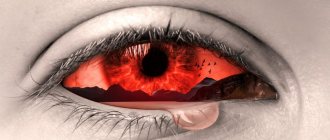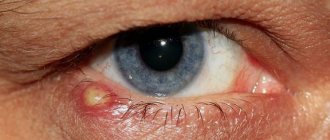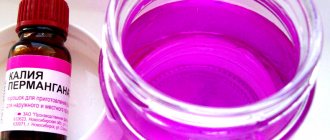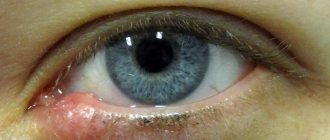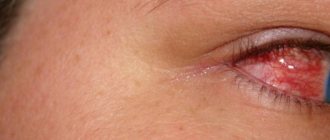The largest medical portal dedicated to damage to the human body Consultation with a doctor
To eliminate bacteria that have penetrated damaged areas of the skin, tetracycline ointment for burns is used. The antibacterial drug has an effective effect on suppressing the inflammatory process and preventing suppuration.
Treatment of affected wounds
- Composition of the drug and pharmacological action
- Use of tetracycline ointment
- Treatment of burns with tetracycline ointment
- Restrictions on use and side effects Contraindications of the drug
- Analogues of the drug
Composition of the drug and pharmacological action
With proper use of the ointment, swelling and redness will go away, and the intensity of pain will decrease. Tetracycline ointment is prescribed when a 2nd degree burn is detected, when blisters on the skin have already burst and a bacterial infection may occur.
The drug is produced in aluminum tubes weighing 10, 30 and 50 grams. The active substance of the drug is tetracycline hydrochloride, which can be contained in 1 and 3%.
Auxiliary components include:
- petrolatum;
- ceresin;
- sodium disulfide;
- anhydrous lanolin.
The ointment is an external remedy that is used in the presence of a bacterial infection. The drug has a bacteriostatic effect, which is aimed at preventing the growth and development of pathogenic microorganisms.
The antibiotic tetracycline blocks the production of proteins that bacteria need to reproduce.
The drug is used to destroy the following infectious pathogens:
- coli;
- enterobacteria;
- staphylococci;
- streptococci.
Eliminating E. coli with Tetracycline ointment
The product contains lanolin and petroleum jelly. They have a softening and moisturizing effect. The use of an antibiotic will help avoid the formation of complications due to the rapid interruption of inflammation and swelling of the affected area.
Use of tetracycline ointment
The medicine is an antibiotic that comes in the form of an ointment for topical use. It is used for treatment and prophylactic purposes against bacterial skin infections.
In ophthalmology, it is practiced to apply 1% tetracycline for eye burns of chemical and thermal origin. In addition, the drug is included in treatment regimens for patients with conjunctivitis, barley and blepharitis.
Is it possible to apply tetracycline ointment to a burn?
Due to its bacterial effect, tetracycline ointment is used in the following cases:
- burn;
- acne;
- eczema;
- streptoderma;
- furuncle.
Treatment of 1st degree damage with the drug
In the treatment of skin diseases, a 3% preparation is used by applying it to the affected areas of the skin in a small layer, covering the area around the wound.
For skin burns, the drug is most often used in the form of bandages, which need to be changed 3-5 times a day. The product is lubricated with a sterile bandage and applied to the injured area.
Applying a tetracycline bandage to the affected area
It is also possible to simply lubricate the burned wound with medicine. Fabrics are processed up to 3 times a day.
Important information! Eye burns are treated with a 1% antibacterial agent applied directly to the eyelid.
For pustular infections, ulcers and eczema, it is recommended to treat with compresses of tetracycline ointment. It is necessary to apply a thick layer of the drug to a gauze bandage and apply it to the damage for 12 hours. The procedure is repeated every day until the skin heals the wound.
Indications
Tetracycline ointment in a concentration of 1% is used for thermal or chemical burns of the eyes. Ophthalmologists also prescribe it for conjunctivitis, damage to the lacrimal canal, barley, and blepharitis.
At a concentration of 3%, the product is used for burns and in the treatment of infectious skin pathologies, including abscesses, eczema and folliculitis. The ointment is used after surgery to prevent infection of sutures. In dermatology, the drug is prescribed for the treatment of acne.
Tetracycline ointment is prescribed not only for the treatment of burns, but also in the following cases:
- treatment of pustular skin lesions (streptoderma, boils), trophic ulcers, eczema (including complicated ones);
- treatment of diseases of the eyes and their appendages (damage to the lacrimal sac, conjunctivitis, damage to the cornea, trachoma, damage to the lacrimal duct, etc.);
- prevention of bacterial complications after injuries or operations.
A drug containing 1% active ingredient is used for complex recovery of eye lesions. In ophthalmic practice, it is used for conjunctivitis, damage to the lacrimal canal, barley and blepharitis.
In higher dosages, the medication is prescribed for thermal injuries and in the treatment of pathologies of an infectious nature. These are primarily abscesses and eczema. The ointment is used after surgical interventions as part of preventive measures for wound suppuration. In dermatology, this medication is prescribed to get rid of acne. The use of tetracycline gel accelerates the healing process.
Treatment of burns with tetracycline ointment
Exposure to high temperatures (more than 60 degrees), electric current and chemical compounds can cause burns.
Moreover, not only the skin, but also the mucous membranes of the mouth, nose, and eyes can be damaged.
- At the initial treatment stage, products are used that eliminate pain and cool the affected skin. Most of them contain dexpanthenol, which quickly heals tissue.
- For burns, tetracycline ointment is prescribed if weeping wounds form on the skin. Bacteria of pathogenic origin enter them from the environment and actively multiply. Although antiseptic agents are used, the tissues are not restored. As a result, the edges of the burned skin become red, inflamed, and suppuration occurs.
Important! Only applying an antibacterial ointment will cope with the infection and speed up the recovery process.
| Burn shape | Therapeutic approach |
| Chemical burn with eye damage
| The 1% product should be used for chemical burns to the eyes. Using the product, you can prevent the occurrence of swelling and inflammation that occurs due to pathogenic microorganisms. As first aid, ophthalmologists advise placing the antibiotic tetracycline behind the eyelid. |
| Chemical damage to the skin
| When concentrated chemicals come into contact with the skin, a wound immediately appears. Even with timely treatment with an antiseptic, it is impossible to prevent infection. Therefore, a product is prescribed to lubricate the damaged area 3-4 times a day. |
| Radiation exposure
| For 1st and 2nd degree burns and prolonged exposure to the sun, tetracycline ointment is applied when redness and swelling spread to healthy areas of the skin. |
When the eyes are damaged, the most common diagnosis is retinal damage, which occurs from exposure to temperature.
However, the most dangerous injuries that penetrate the eye include chemicals:
- Acid.
- Alkali.
- Heavy metals.
In such a situation, timely assistance and the use of tetracycline ointment can preserve the visual ability of the victim.
Remedy for eye damage
After a burn to the organ of vision, a person experiences the following symptoms:
- severe lacrimation;
- the mucous membrane turns red;
- sensitivity to light increases.
Application of eye ointment
Thanks to the active substances that are present in the medicine, in case of a chemical burn of the skin, they quickly penetrate into the areas of inflammation and eliminate pathogens. The drug also helps prevent scarring and scar formation on burned skin.
During the recovery period, tetracycline ointment should be used to prevent infection with streptococci and staphylococci. If microorganisms penetrate the wound, an antibacterial agent will help prevent their growth and further spread.
Restrictions on use and side effects
Tetracycline ointment is not recommended to treat burns if the victim suffers:
- leukopenia;
- extensive fungal infection;
- liver failure;
- stomach ulcer;
- there is an allergy to the components of the drug.
Contraindications to the use of the drug for stomach ulcers
The medicinal substance is not compatible with certain drugs:
- It is unacceptable to use the drug together with penicillins, cephalosporins, or retinol.
- It is also impossible to combine the drug with colestipol, since such a combination leads to a decrease in the absorption of the antibiotic.
- Applying the product together with vitamin A will increase blood pressure.
Tetracycline promotes the formation of sparingly soluble complexes with calcium, iron and other metals. Therefore, during therapy with this remedy, it is not recommended to consume milk and foods containing calcium, as well as mineral complexes with foods rich in iron (apples, apricots, peas, buckwheat, greens).
Contraindications of the drug
If the victim has deep puncture wounds or severe burns, this medicine will not help. The drug is contraindicated for use in children under 11 years of age. The use of ointment is most often not associated with the development of serious side effects, and is well tolerated by many.
However, a number of side effects may occur, which manifest themselves as:
- allergies – itching, swelling, rash;
- pain at the site of application of the ointment;
- visual impairment;
- tooth darkening, in case of long-term treatment;
- digestive disorders - bloating, dysbacteriosis;
- candidiasis.
Although the percentage of absorption of tetracycline when used externally is low, it is not recommended to lubricate burns with it during pregnancy and breastfeeding. Since the drug negatively affects the development of bone structures of the fetus or infant. The child may develop hypoplasia of tooth enamel.
Note! The use of the drug by pregnant women is permissible only if the benefit from treating the mother justifies the threat to the fetus.
What is blepharitis?
Blepharitis is a bilateral, recurrent inflammation of the eyelid margins.
This disease is considered very common. Children are often susceptible to it, but the peak incidence occurs in middle and old age - from 40 to 70 years. Blepharitis is quite difficult to cure. The disease may recur. Its symptoms often reappear after recovery. The danger of the disease is that its long course can lead to keratitis, conjunctivitis, and the formation of chalazion.
The disease also develops in newborns. The main reason is the infant’s weakened immunity. The baby's eyelashes begin to stick together. After sleep, children may find it difficult to open their eyes. This happens due to increased secretion of the sebaceous gland, which disrupts the normal pH level. Older children often rub their eyes with their hands. This can lead to damage to the mucous membrane and infection. In this regard, blepharitis begins to develop. There are quite a few reasons for the development of the disease. The main causative agent of the disease is Staphylococcus aureus and epidermal. Blepharitis often develops against the background of chronic infectious diseases. The progression of the disease is affected by a lack of vitamins in the body, viral infections, and visual disturbances that are not corrected. Blepharitis occurs with decreased immunity, chronic intoxication, anemia, and allergic reactions.
The danger of blepharitis is that it often becomes chronic. This happens because in the first stages of the disease the symptoms are inexpressive. Many people do not pay attention to the discomfort that begins to develop after an infection enters the body. Unfortunately, by the time patients see a doctor, the effectiveness of treatment may be low. This is due to the fact that the disease has been actively developing for a long time.
